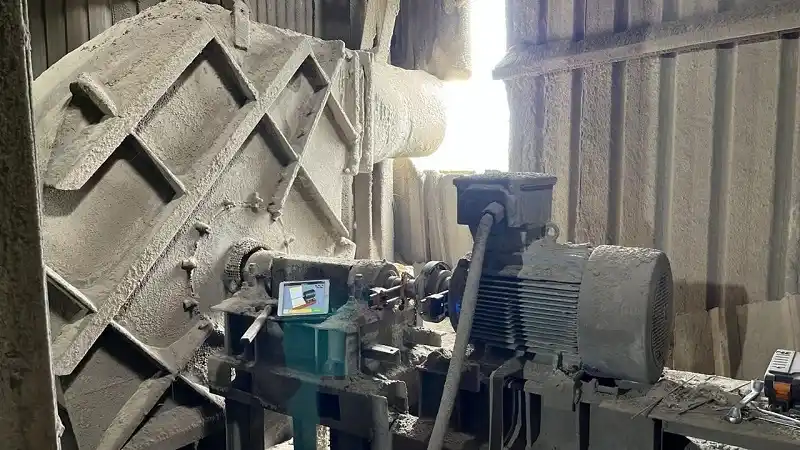
Shaft Alignment Services for Marine & Port Equipment in Kolkata
Kolkata, one of India’s busiest and oldest port regions, is a important hub like marine trade, ship repair, and industrial activities along the Hooghly River. With continuous vessel movement, heavy lifting, dredging work, and round the clock operation of rotating machinery, the need like reliable shaft alignment services in Kolkata has increased rapidly.
Proper alignment is essential to save marine and port tools running smoothly. Along with, This also reduces unexpected crash, and increase the overall lifespan of machinery.
Importance of Shaft Alignment for Marine and Port Operations
Shaft misalignment is a daily issue in ships, cargo handling equipment, and industrial machinery. Over time, factors like vibration, heat expansion, uneven load distribution, and regular wear able to be cause shafts to move out of alignment.
When this happens, it capable of lead to expensive breakdowns, higher fuel consumption, and fast damage to bearings and couplings. Like these reasons, professional marine shaft alignment Kolkata services in have become important to save operations smooth, safe, and efficient.
Whether it is a cargo ship coming at Kolkata Port or heavy duty cranes handling containers, accurate alignment is important to securing smooth operation and minimizing maintenance downtime. Today, many shipyards and port space depend on specialized port equipment alignment services. So, with adopting this saves their machinery safe, reliable, and running efficiently.
Advanced Laser Alignment for Modern Marine Equipment
Traditional alignment techniques are capable of not save up with today’s high precision machinery. That’s why many service providers now build on laser shaft alignment in Kolkata that cannot achieve accuracy down to a few microns. Using laser tools not only reduces human error but also speeds up maintenance and provides detailed reports like future reference.

Laser alignment is now commonly used like:
- Main and auxiliary marine engines
- Pumps and motors
- Propeller and propulsion systems
- Cranes and winches
- Industrial rotating equipment
This modern technology has greatly improved the accuracy of marine engine alignment, particularly like boat during periodic surveys, repairs, or overhauls.
Key Areas Where Alignment Services Are Essential
Due to the diverse marine and industrial activities in Kolkata, alignment services are needed like a wide range of applications.
1. Propulsion Shaft Alignment
The push system is the heart of every boat. Correct alignment of propulsion shaft alignment secure that power flows smoothly. This alike the engine to the propeller, minimizing vibration, heat buildup, and fuel wastage.
2. Pump and Motor Alignment
In ships, ports, and industrial settings, pumps and motors are important like tasks like cooling, ballast handling, cargo operations, and fire safety. Proper alignment of these pumps and motors alignment ensures long term smooth operation and helps stop daily mechanical breakdowns.
3. Crane and Winch Alignment
Ports such as Kolkata depend heavily on cranes, hoists, and crane to move cargo. Even slight misalignment capable of reason load unreliability and pose serious safety risks. That’s why proper of cranes and winch is important like safe and efficient port operations.
4. Industrial Rotating Equipment Alignment
In industrial areas near Kolkata, such as Haldia and Taratala, machinery like air pimp, generators, and turbines need exactly industrial rotating equipment alignment to secure smooth operation and unbroken production.
Role of Vibration Analysis in Preventive Maintenance
Detecting alignment problems early is important to stop costly crash. This is where vibration analysis Kolkata services in play a important role. By analyzing vibration patterns, technicians capable of spot misalignment, imbalance, bearing wear, and mechanical looseness ago they suit serious issues. This predictive maintenance approach helps reduce break and extend the life of machinery.
Support for Ship Repair and Marine Maintenance
Kolkata is strong hub for many shipyards and repair docks that involve the GRSE, private yards, and port workshops. These facilities build on skilled alignment professionals to provide Kolkata ship repair services. From engine service to shaft installation and routine maintenance, proper alignment is a key part of every repair project.
Regular marine maintenance heavily relies on proper alignment. Routine check help secure that critical machinery runs efficiently, even in harsh marine conditions, under constant load changes, and continuous vibration.
Final Remarks
As maritime trade grows and ports modernize, Kolkata’s marine and industrial sectors more and more need reliable, high precision shaft alignment solutions. From marine shaft alignment Kolkata to port equipment alignment services, the performance of every machine depends on accurate alignment.
Advanced tools like laser shaft alignment in Kolkata, along with expertise in marine engine alignment, pump and motor alignment, crane and winch alignment, and industrial rotating equipment alignment that help ensure long term operational efficiency.

